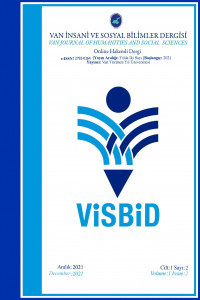Ardahan’ın Yok Olan Sanatı “Keçecilik”
Üretim yöntemi ile halı ve düz dokuma yaygılardan ayrılan keçenin ilk kez hangi coğrafyada ortaya çıktığı kesin bilinmese de Orta Asya’da kurganlara konulan eserlere bakılınca bu sanatın öncüleri arasında Türklerin de olduğu rahatlıkla söylenebilir. Nispeten kolay ve hızlı üretilmesinin yanında Orta Asya’nın zorlu iklim koşullarına uyum sağlamayı kolaylaştırması, keçenin kullanım alanının çeşitlenmesine de katkı sağlamıştır. Öyle ki çadırlar, çadırların tefriş eşyaları, kıyafetler, eyer örtüleri ve tözlerin yapımında çoğu zaman keçe tercih edilmiştir.
Türklerin Anadolu’ya uzanan göçleriyle birlikte bu topraklara taşınan keçecilik sanatı, Selçuklu, Beylikler ve Osmanlı Dönemlerinde gelenekli usullerde, yeni yaşam biçimine uygun üretimlerle devam ettirilmiştir. İlk dönemlerden itibaren keçe ustasının mahareti ve estetik kaygısı sayesinde, farklı tekniklerde rengârenk bezenen keçeler, kaba bir zanaat ürününden değerli bir sanat eserine dönüşmüştür.
Her dönem Anadolu’nun önemli dokumacılık merkezleri arasında yerini koruyan Ardahan ve çevresinde, kullanım alanının genişliği sayesinde 1970’li yılların başına kadar bol miktarda keçe üretimi yapılmıştır. Bu tarihten itibaren giderek unutulan keçeciliğin günümüze ne yazık ki sınırlı sayıda örneği ulaşabilmiştir. 2022 yılında il merkezi ve köylerinde sürdürdüğümüz araştırmalarda, tespit edebildiğimiz keçe yaygılar, yöre halkı, esnaf ve yaşayan son keçe ustasının verdiği bilgilerle desteklenerek, malzeme, teknik ve süsleme özellikleri yönünden makale kapsamında anlatılmaya gayret edilmiştir.
Anahtar Kelimeler:
Ardahan, Gelenekli El Sanatı, Yün, Hallaç, Keçe
Ardahan’s Destructive Art "Felting"
Although it is not known exactly in which geography the felt, which is separated from carpets and flat woven mats by its production method, first appeared, it can be easily said that the Turks are among the pioneers of this art when looking at the artifacts placed in the kurgans in Central Asia. In addition to its relatively easy and fast production, the fact that it makes it easier to adapt to the harsh climatic conditions of Central Asia has also contributed to the diversification of the usage area of felt. So much so that in the production of tents, furnishings of tents, clothes, saddle covers and powders, felt was often preferred.
The art of felt making, which was carried to these lands with the migration of Turks to Anatolia, was continued in the Seljuk, Principalities and Ottoman periods with traditional methods and productions suitable for the new lifestyle. From the earliest times, thanks to the skill and aesthetic concern of the felt master, the felts, which were decorated with different techniques, turned into a valuable work of art from a rough craft product.
In and around Ardahan, which has always maintained its place among the important weaving centers of Anatolia, plenty of felt production was made until the beginning of the 1970s, thanks to the wide area of use. Unfortunately, a limited number of examples of felt making, which has been gradually forgotten since this date, have reached today. In the research we carried out in the city center and villages in 2022, the felt mats that we could detect were supported by the information given by the local people, tradesmen and the last living felt master, and it was tried to be explained in terms of material, technical and ornamental properties.
Keywords:
Ardahan, Traditional Handicraft, Wool, Hallac, Felt,
___
- Begiç, H. N. (2020, Mayıs). Urfa Siverek’te Geleneksel Keçecilik ve Ustaları, Şanlıurfa Kültür Sanat Tarih ve Turizm Dergisi, Sayı 37, Yıl 12, 10, 36-38. Begiç, H. N. (2017). Türk Keçecilik Sanatı, Ankara: A.K.M. Başkanlığı.
- Başlangıç: 2021
- Yayıncı: Van Yüzüncü Yıl Üniversitesi
Sayıdaki Diğer Makaleler
Thrasymakhos'un Adalet Anlayışında 'Güç' Kavramı
Ahlat Selçuklu Meydan Mezarlığı’nda Esed Bin Bergi İmzalı Mezar Taşı Üzerine Bir Değerlendirme
Kabzası Çerçeveli Urartu Kılıçları ve Yapım Teknikleri
Ardahan’ın Yok Olan Sanatı “Keçecilik”
Midyat’ta Bir Kaya Kilisesi (Gülgöze (Ayn Wardo) Mor Barsavmo Kilisesi)
